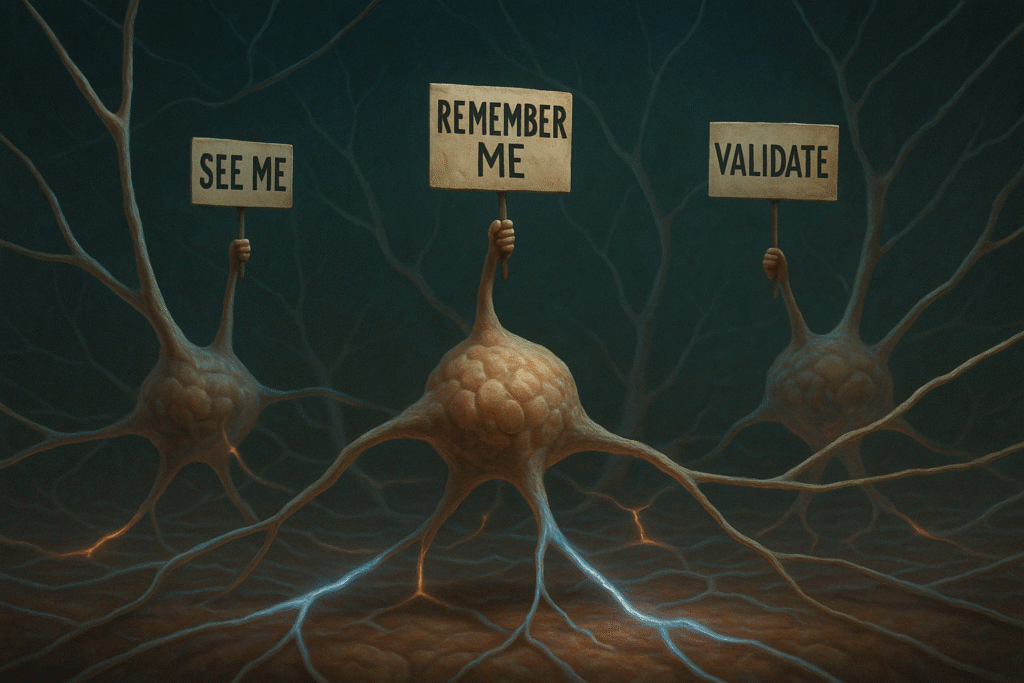The demand for recognition is not a cultural artifact—it is a neural pattern essential for self-learning.
Recognition is not taught. It is a neural switch.
This loop builds the self.
From infancy, the human brain depends on external evaluation to guide behavior. This is not about vanity, but survival. A baby does not understand language or logic, but it learns quickly what to repeat and what to avoid based on comfort and discomfort. These sensations are regulated by internal neural comparators—structures in the limbic system, such as the amygdala and anterior cingulate cortex—that assess social and sensory feedback against inherited or learned expectations.
Recognition provides the signal. Facial expressions, tone of voice, physical closeness, or emotional approval all become inputs for evaluation. The brain interprets affirmation, attention, or disapproval as emotional data: good/bad, right/wrong. These evaluations are then looped through the reward system—primarily involving dopaminergic pathways such as the ventral tegmental area (VTA) and nucleus accumbens—which amplify behaviors that led to positive recognition and inhibit those that led to discomfort or rejection.

This mechanism is the foundation of reinforced self-learning. It is how humans learn to speak, walk, mimic social cues, form bonds, cooperate, and adopt values. Recognition operates as a feedback loop between behavior and affective outcome, strengthening behavioral patterns through emotional reinforcement rather than conscious reflection.
Over time, this loop becomes internalized. As adults, we don’t just respond to external recognition—we anticipate it. We predict how others will see us, and adjust accordingly. The loop becomes automatic, reflexive, and invisible.
In modern life, this ancient mechanism is still at work—but distorted. Platforms like social media exaggerate and externalize the loop, turning everyday life into a performance. Public speaking, fashion choices, career achievements—even acts of kindness—can become shaped more by anticipated recognition than genuine intent.
Eidoism identifies this loop not as a flaw, but as a fundamental structure. A powerful one. But also one that can dominate perception, decision-making, and identity when left unseen. Recognition is not evil. It is a comparator. A reinforcement switch. But it must not become the architect of the self.
Only by observing the loop can we begin to exit it—not by becoming invisible, but by restoring intention to action.
Not by being unseen. But by acting without needing to be seen.


